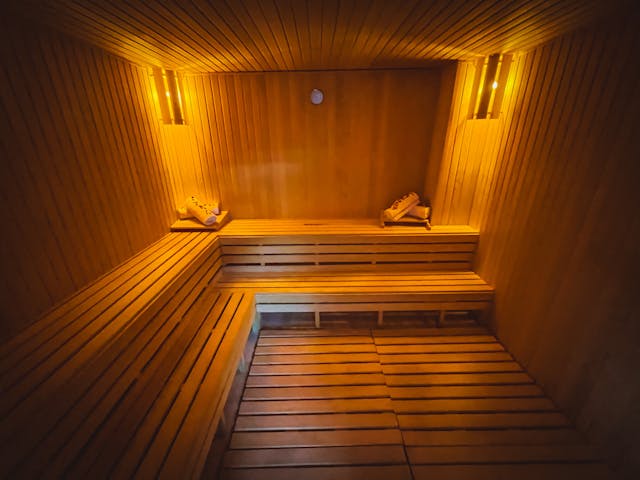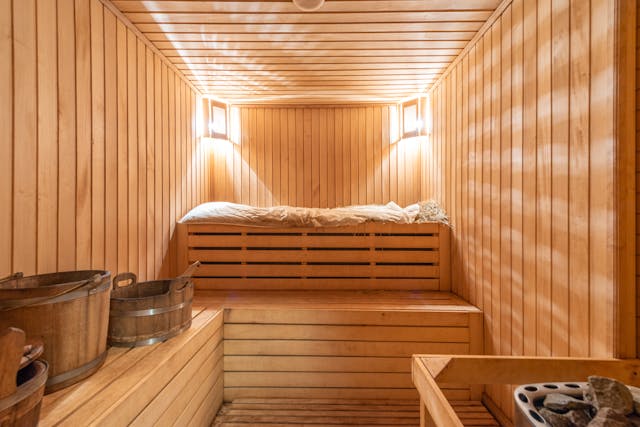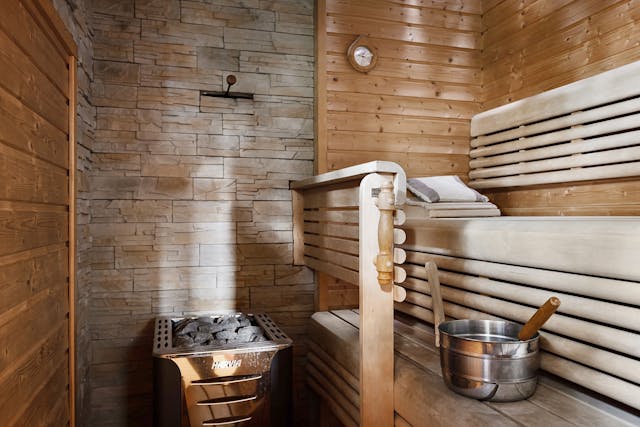Welcome to GertieBlu! Today, we’re stepping into the world of saunas, a timeless tradition that has been cherished for centuries across different cultures. Saunas are more than just a place to relax—they offer a variety of health benefits that make them a staple in wellness routines worldwide. Whether you’re a seasoned sauna-goer or a curious newbie, this guide will walk you through the different types of saunas and the many ways they can boost your health.
A Brief History of Saunas
The word “sauna” originates from Finland, where the tradition dates back over 2,000 years. Originally, saunas were small rooms built into the ground or cabins where stones were heated to create steam. Today, the sauna experience has evolved, with various types designed to cater to different preferences and health needs. Yet, the essence remains the same: a place to unwind, detoxify, and rejuvenate the body and mind.

Types of Saunas
- Traditional Finnish Sauna: The classic sauna experience, the Finnish sauna, involves heating a room to high temperatures—usually between 150°F and 195°F (65°C to 90°C)—using a stove or a wood-burning fire. The air inside is dry, with humidity levels typically around 10-20%. You can increase the humidity by pouring water over the hot stones, creating a burst of steam known as “löyly.” This type of sauna is ideal for those who enjoy intense heat and a more traditional experience.
- Infrared Sauna: Infrared saunas are a modern twist on the traditional sauna. Instead of heating the air around you, infrared panels emit light that your body absorbs, warming you directly. These saunas operate at lower temperatures, around 120°F to 140°F (49°C to 60°C), making them more tolerable for people who may find traditional saunas too hot. Infrared saunas are praised for their deep-penetrating heat, which is said to help with muscle recovery and detoxification.
- Steam Sauna (Steam Room): Unlike the dry heat of a traditional sauna, steam saunas, or steam rooms, offer a moist heat environment. The temperature is lower, around 110°F to 120°F (43°C to 49°C), but the humidity is at 100%. The high humidity creates a different kind of sweat, which is gentler on the skin and respiratory system. Steam saunas are often used for respiratory benefits, as the moist air can help soothe sinuses and improve breathing.
- Banya (Russian Sauna): The Russian Banya is similar to the Finnish sauna but with a few unique twists. The temperature is comparable, but the humidity levels can be much higher, especially when water is poured over the hot stones. The experience often includes a “venik” ritual, where bathers are gently beaten with bundles of birch, oak, or eucalyptus leaves to stimulate circulation and release tension.
- Hammam (Turkish Bath): The Hammam is a Middle Eastern variant of the sauna, combining elements of steam and ritual cleansing. The Hammam experience usually involves multiple rooms with varying temperatures and a focus on water-based treatments. The temperature in a Hammam is milder, making it a more social and leisurely experience. It’s as much about relaxation and conversation as it is about heat therapy.
Health Benefits of Saunas
The allure of saunas extends beyond their soothing warmth. Regular sauna use is associated with a host of health benefits:
- Detoxification: Saunas promote sweating, which helps the body eliminate toxins. When your body heats up, it triggers a deep sweat, flushing out heavy metals, chemicals, and other toxins that accumulate over time.
- Improved Circulation: The heat from the sauna causes your blood vessels to dilate, improving circulation and increasing blood flow to the skin and muscles. This can help with muscle recovery, reduce soreness, and improve joint mobility.
- Stress Relief: Spending time in a sauna can reduce stress by promoting relaxation. The warmth soothes muscles, while the quiet, meditative environment helps calm the mind. Regular sauna sessions can lower cortisol levels, the hormone responsible for stress.
- Enhanced Skin Health: Sweating in a sauna cleanses the skin, opening pores and removing impurities. The increased blood flow to the skin also delivers more oxygen and nutrients, leading to a healthier complexion. Regular sauna use can improve skin elasticity and reduce the appearance of fine lines.
- Respiratory Health: Saunas, particularly steam saunas, can be beneficial for those with respiratory issues. The warm, moist air helps to open airways, reduce congestion, and soothe irritated sinuses. This is especially useful during cold and allergy seasons.
- Cardiovascular Benefits: Regular sauna use has been linked to improved cardiovascular health. The heat causes your heart rate to increase, similar to light exercise, which can help improve heart function and lower blood pressure over time.
- Better Sleep: The relaxation and endorphin release from a sauna session can contribute to better sleep. The rise and subsequent fall in body temperature post-sauna can help facilitate a deeper, more restful sleep.

Final Thoughts
Whether you prefer the intense heat of a Finnish sauna or the gentle warmth of an infrared sauna, the benefits are clear: saunas offer a natural, enjoyable way to improve your health and well-being. If you haven’t yet embraced the sauna tradition, now might be the perfect time to start. Your body and mind will thank you!
Thanks for reading GertieBlu! I hope this post has inspired you to explore the world of saunas and discover which type best suits your needs. Until next time, stay warm and stay well!









